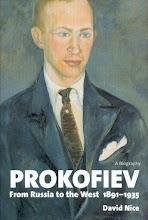
We’re talking not any of those Kalevala maidens from Luonnotar to Aino, depicted above evading old man Väinämöinen in an early triptych by Sibelius’s friend and contemporary Akseli Gallen-Kallela, but the BVM, no less.
The news was broken to me by that nice BBC man Mark Lowther, bounding up enthusiastically at the interval of Friday night’s concert (which I was reviewing for The Arts Desk, but had been determined to catch under any circumstances). Had I heard what conductor Sakari Oramo had to say about new research on the Sibelius Third Symphony, in which he was about to conduct the BBC Symphony Orchestra? I hadn’t, but Mark gave me the gist and I caught Oramo succinctly mentioning it again in the broadcast between Luonnotar and the symphony.
In short, says Oramo, ‘this music or material of it was originally part of an oratorio project about the Virgin Mary, and you can I think relate to a lot of this music thinking it has a religious – albeit it is a pagan-religious or folk-religious – background, and I think this explains a lot of the chorale textures, it explains the nature of the final hymn.’

Indeed – hurrah for ongoing Finnish scholarship, and how frustrating that unless we master that impossible language, the rest of us are shut out from the more interesting developments until someone like Oramo draws our attention to it. Anyway, that’s enough to justify inclusion of a couple of images from the Barbara altarpiece by the north German Master Francke, which resided in the church in Kalanti from about 1410 to 1883 and is now in Helsinki’s National Museum of Finland.

Not that the news changes the essential character of the symphony, which has the feeling of a journey like the earlier ones in the Lemminkäinen Suite and En Saga. But how difficult to put one’s finger on what makes this music strike so profoundly, apart from its deep-wired structural surprises (what an amazing solution to let the chorale out of the bag in the finale when he does). I found myself in tears minutes into the second movement, which for swathes does little more than oscillate around an intermezzo-like, runic melody. Järvi's Gothenburg performance is one of the few to capture the same sort of inscaped magic.
I’d been in a gloomy mood all week, mostly triggered by ongoing dental surgery, and this lifted me completely as Chailly’s Beethoven on Wednesday couldn’t.

Same goes for Luonnotar, the Finnish creation myth as adapted from the Kalevala, and illustrated above and below by Gallen-Kallela. The depicted stanzas deal with Luonnotar/Ilmatar’s floating on the water and her raising of a knee for a teal to nest on.

From the teal’s egg are fashioned the solid earth, the lofty arch of heaven, the sun (its yolk), the moon (its white) and the stars (its speckled shell). I’ve written enough already in the Arts Desk piece about the BBCSO/Oramo partnership with the wonderful Mrs. O., Anu Komsi, who’s previously dazzled us with twin Piia in Salonen’s Wing on Wing. There’s communication for you. Mattila amid wavescapes will do here (be patient with the opening soundtrack, which fades before the music begins), but Friday night's performance was even more extraordinary, and the communication cried out to be seen as well as heard.
Komsi WAS the Virgin of the Air cast plaintively upon the waters, and earlier she even convinced me that there might be more to Saariaho than what so briefly tickles the ear: here was substance as well as texture. But of course it’s Sibelius who still sounds freshest and continues to give perhaps the greatest spiritual sustenance of any composer I know. I still count those four hours spent last March at his home of Ainola (pictured again below - this of course is where he composed the Third Symphony), prompting four entries starting with this one, as among the most impression-filled of my life. And Sibelius's unflagging genius - the miniatures are as individual as the compressed epics - has come to feel like the strongest of all musical companions through life.


















































